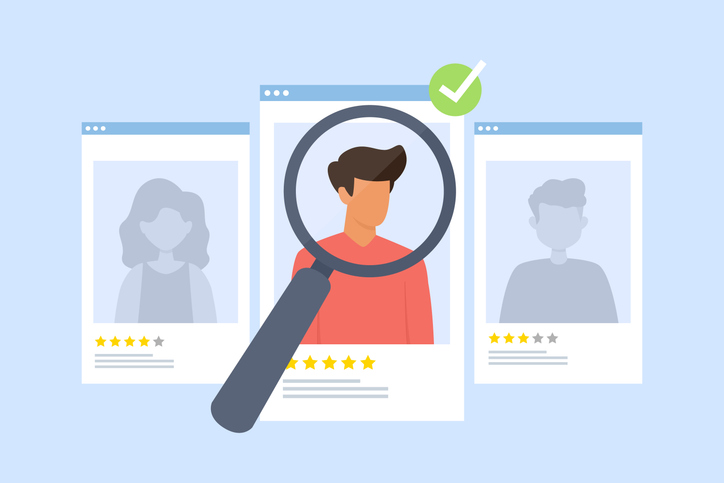Everybody recognizes “a good hire” when they see one.
It’s the person who’s joined the company with ambition and drive, ready to demonstrate excellence in the role they’ve been given.
When it’s time to offer new ideas to solve long standing problems, this is the person eager to contribute to the brainstorming process.
They’re productive, efficient, collaborative, and always evaluating their progress to identify areas for improvement and professional development.
For most people in a company, though, a good hire only becomes evident well after the fact – once that star employee has been onboarded, trained and on the job for a period of weeks or months.
Those in HR and leadership positions need to be able to spot good hires much earlier – often among a large pool of applicants who haven’t provided all the necessary indicators.
Perhaps as a result, research from the Society for Human Resource Management (SHRM) shows that it takes 36 days, on average, to fill a position. This includes the
period of time between the approval of a request for a new role and for a candidate to accept the job offer.
That’s more than a month where companies can lose ground on achieving business goals because they don’t have the necessary talent in place. If there was a business case to be made for leveraging artificial intelligence (AI) in hiring, it begins with that backdrop in mind.
AI can be a boon to hiring managers for the same reason the technology has transformed other areas of business, from forecasting sales to personalizing the way marketing teams engage with customers and prospects. AI was purpose-built to work with larger datasets than human beings could analyze on their own. Used properly, AI can streamline many of the most critical steps in recruitment.
Of course, using AI in hiring requires the same due diligence in terms of assessing features and capabilities that are part of adopting any technology. For example, it’s important to ask about the underlying ethics that have been used to develop an algorithm for an AI tool, and how it protects against potential bias.
AI in hiring also depends on having a central way to collect, manage and share employee data, given that the person being hired will likely interact with staff across a variety of different business functions.
With that foundation in place, consider the following steps for how AI can be introduced throughout the hiring journey.
The Pre-Screening
Companies have used application tracking systems for years to scan through piles of resumes to spot keywords they associate with the candidates they want to hire. AI can super-charge that process, but it can also go far beyond it by directly engaging with applications early on.
By presenting applicants with questions, videos or chatbots on screen, for instance, AI can conduct the equivalent of a first-round interview. Using natural language processing, the technology can then narrow down the list of applicants to those who should be connected with HR or hiring managers.
Just make sure there is transparency to the applicant about how AI is being used at this stage, and that it is positioned as a way to achieve a mutually beneficial outcome: a good fit between employer and employee.
Scheduling
Unlike AI, humans only have so much time in the day. This includes both the person who will be conducting job interviews and the candidate being interviewed. Finding a spot on both parties’ calendars can require considerable back-and-forth, often over email. This means a hiring manager could be waiting to hear back from a candidate about whether a given time works, or vice-versa.
Manually arranging job interviews could also be more challenging now that many firms are considering candidates who are not based close to their offices and may work remotely. Scheduling mistakes are easy to make when multiple time zones are involved.
AI can work across calendaring systems, email and HR tools to help alleviate this kind of admin task. The technology can also schedule interviews based on preferred times of day, duration, and even assist with last-minute rescheduling (which often comes up).
Onboarding
Humans may still make the final call on who gets hired, but AI will provide more data to help make their decisions as well-informed as possible. This isn’t limited to determining which candidate gets a hiring offer, but what should happen after they accept it.
AI can be trained to pinpoint everything from essential tools where a new hire will need special training, to soft skills and emotional intelligence factors that go into making them feel welcomed. Everybody has strengths and weaknesses, and leaders should take advantage of AI to get the relationship with employees off to a great start.
The Future of AI and Talent
Hiring is really just one area where AI can automate and improve many aspects of the employee experience a company is trying to deliver.
With the right data, for instance, AI will be able to find common trends and patterns that help everyone from senior leaders to managers predict how their workforce will respond to changes in policy, new techniques in coaching and strategies that promote greater productivity, and collaboration.
AI could even provide insights gleaned from data recorded at exit interviews. Knowing what prompts someone to seek a new position elsewhere can lead to changes within a business that improves overall retention. That can save considerable costs in terms of replacing valuable employees who would otherwise leave.
No one can afford to make too many mistakes in the people they bring on board. It poses too much risk to how well employees can deliver a great customer experience, which is key to growth for businesses of any size.
With AI, more companies can enhance their ability to find more good hires – and to make them feel glad they chose to be part of the team.


